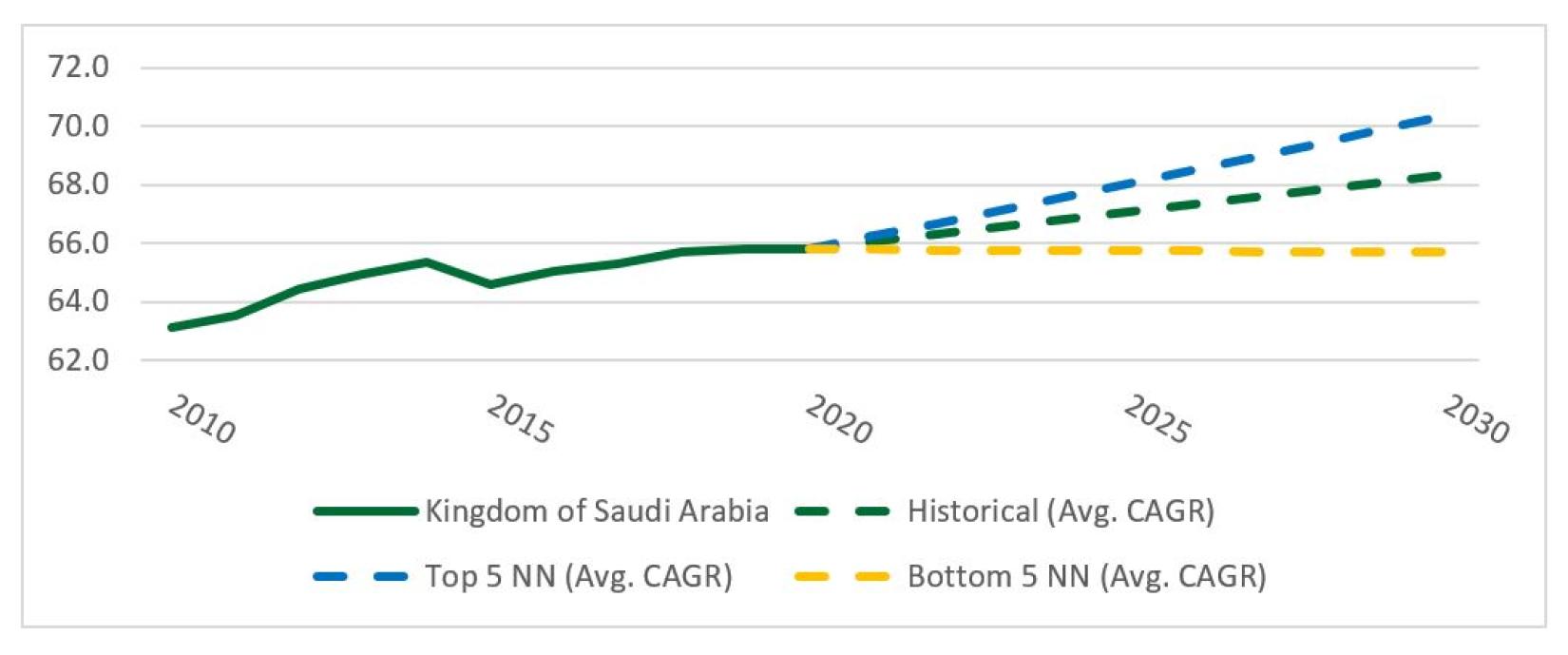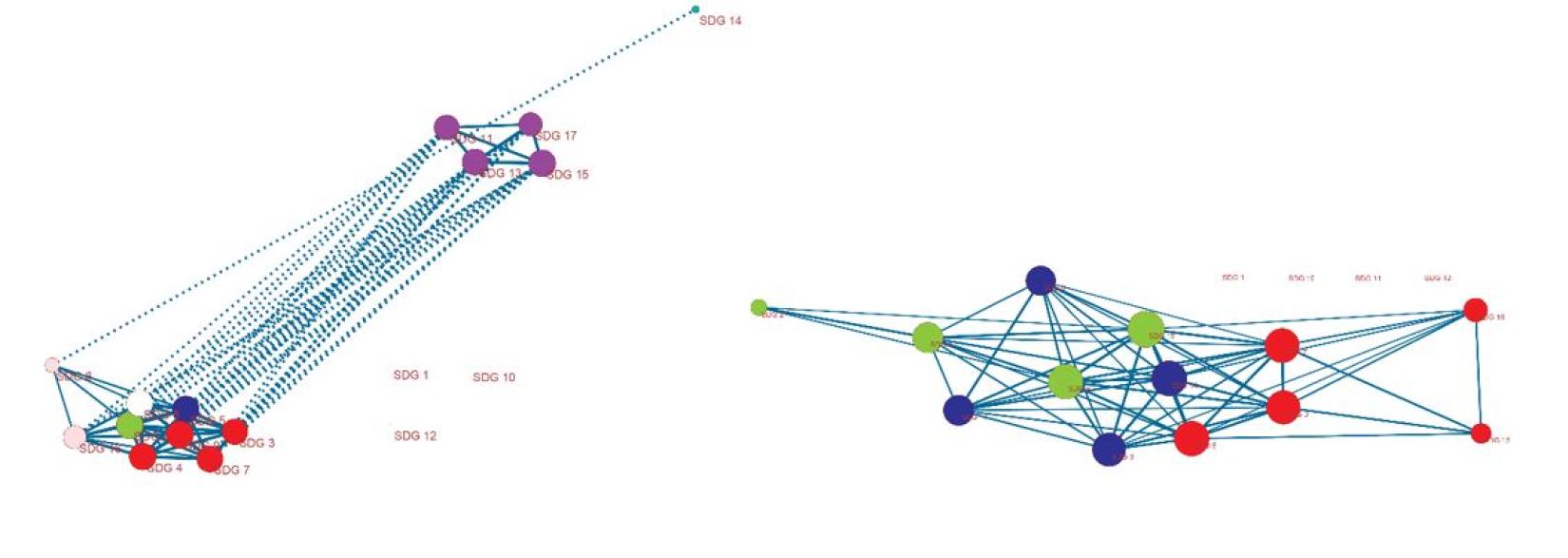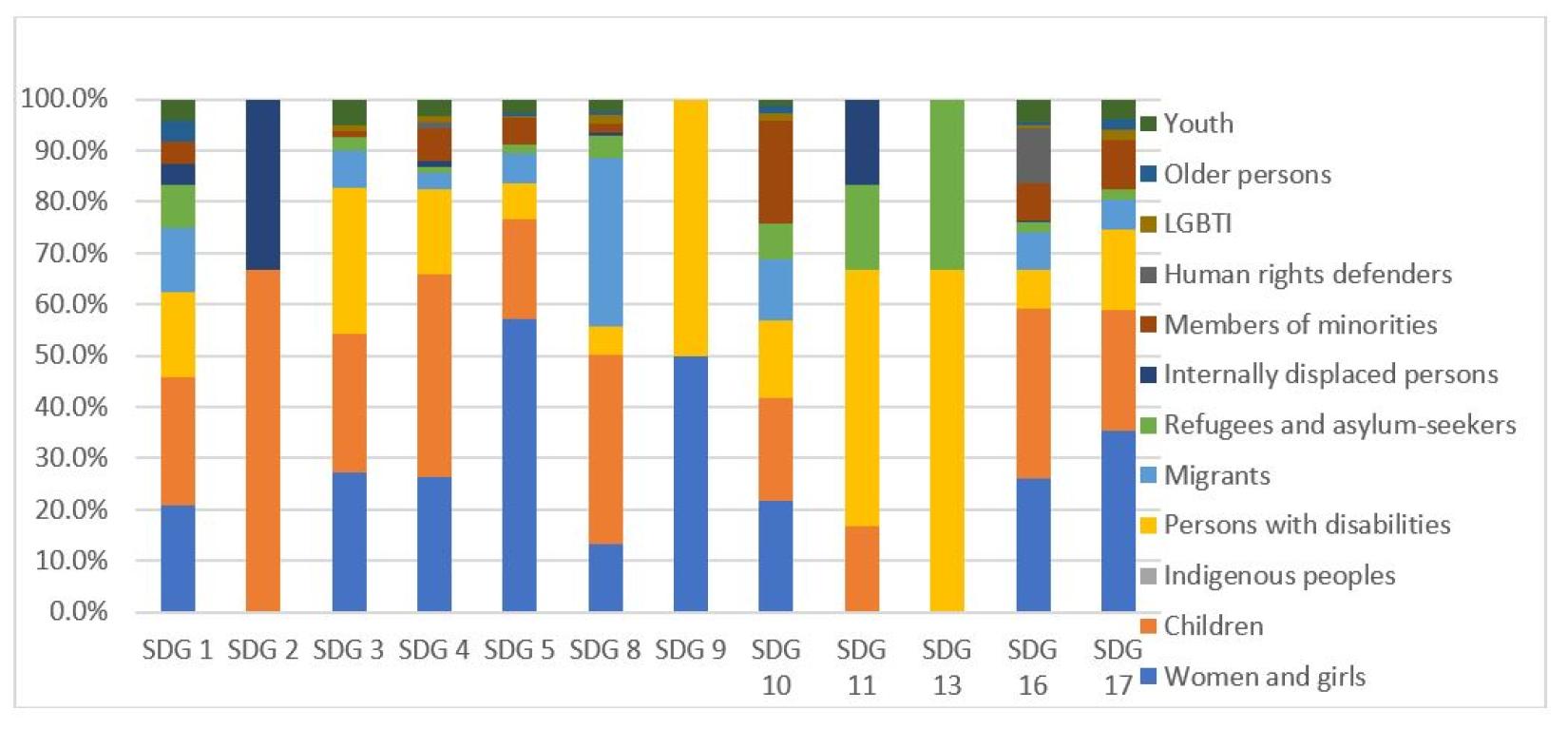RCO Economics - 3 Questions Every Resident Coordinator Can Explore About Their Country’s SDGs

RCO Economics
- How can we forecast SDGs and identify policies for their acceleration?
- How do we capture the interlinkages/connections between SDGs?
- How do we link SDGs with Human Rights and Vulnerable Groups in an objective and data-driven way?
One of the roles of an RCO Economist is to enhance UNCT and Government analytical capability for SDG acceleration. Doing so requires providing relatively easy and accessible methodologies and tools to operationalize the guidance from NY on objective, data-driven, forward-looking, and integrated SDGs-based CCA and CF, with Human Rights and vulnerable groups/LNOB as crosscutting themes.
For that purpose, we have been developing a Toolkit consisting of three policy-oriented papers on macro SDG by SDG forecasts, HR and LNOB quantitative assessment, and SDG interlinkages/integrated approach, along with the statistical code in Stata, steps to take and data sources to use to be able to replicate the approach and results for any chosen country. The Toolkit enhances quick result-oriented analytical capabilities of a UNCTs and Governments which decides to use it. It assures a level of comparability amongst CCAs and CFs across all countries, useful for regional and global monitoring/reporting.
The research producing the Toolkit concentrates on making contributions to three areas: Macroeconomic SDG forecasts, SDG interlinkages/integrated approach, and Human Rights, and LNOB quantitative assessment. The specific research questions underlying all these three areas are, how can UNCT and the government identify the most suitable areas of policy interventions for SDG acceleration, alongside a policy mix which will accelerate progress area by area, while being able to account for the integrated nature of SDGs (which have positive and negative spillovers to one another, and also form specific clusters needing comprehensive, not isolated/siloed interventions) and keep a focus on the most vulnerable groups and human rights. The additional value add is that the approach makes forecasts of macroeconomic SDG scores possible on a country level, allowing for several possible trajectories – a good policy mix trajectory, a historical country trajectory, and a bad policy mix trajectory, all based on recent experiences of other comparable countries, SDG by SDG.
Macroeconomic SDG forecasts, SDG interlinkages/integrated approach and Human Rights, and LNOB quantitative assessment – fully replicable for any country:
Developing macroeconomic SDG by SDG forecasts as well as the SDG interlinkages/integrated approach draws on a methodology of nearest neighbour matching and utilizes Sachs et al. Sustainable Development Report SDG Index data (updated yearly) to build internationally comparable SDG by SDG (for all 17) scores across time, by a variety of methods including data substitution techniques, normalizations, index theory, and aggregation. Then, the nearest neighbour methodology identifies which countries in 2010 were in the most similar position to a country of focus in 2020 across all 17 goals – the nearest neighbours (NN) – implying maximum similarity to our country of focus in each SDG separately. For the SDG by SDG macroeconomic forecasts, we can then determine the top and bottom performers out of the NNs, which implies the countries in those groups have either had a good policy mix or a bad policy mix. The top NNs are where we can then look in detail to see what policies were applied in the decade preceding our analysis, which gives us a good indication of the potentially best policies to be localized to our focus country for maximum SDG by SDG acceleration. We can use the annualized compounded mean growth rates of the top and bottom NNs for projecting an upper and lower bound for all 17 SDG scores for the selected country from 2020 to 2030, as shown in Figure 1 for the example of the KSA and the cumulative SDG Index.

Sustainable Development Goals Interlinkages/Integrated approach allows us to utilize the linkages between the SDGs. Setting up the Developmental network for a chosen country is based on the interlinkages at the SDG level. It shows the integrated nature of SDGs, as it tells us what the connections between SDGs look like, and it implies how a policy intervention for one particular SDG relates to other SDGs. In that vein, the developmental network shows us what the levers of development are, which are the policy interventions that have the greatest potential to expedite the entire 2030 Agenda. Moreover, we can also model the nearest neighbour’s developmental networks , leading to the generation of two developmental networks, one that leads to high human development across all SDGs (the nearest most successful neighbor) and one for our chosen country, where the latter is informed by the former in terms of identifying areas of transformation. This approach uses Social Network Analysis for constructing and analyzing the network characteristics (De Nooy et al., 2018). The examples of the KSA and UAE in Figure 2 below show the differences in SDG centralities, positive and negative linkages between SDGs, clusters/communities of SDGs, implying different developmental frameworks, and identifying both areas and potential policies for transformation when examined closer.
Figure 2: KSA’s (left) vs. UAE’s (right) Sustainable Development Network

Finally, the part on Human Rights and vulnerable groups of this approach utilizes the Danish Institute for Human Rights SDG – Human Rights Data Explorer, using simple statistical methods to show how a quantitative data driven analysis of human rights with vulnerable groups can intersect with the SDGs. It determines what the distribution of observations and recommendations across the SDGs and across vulnerable groups is (identifying most salient vulnerable groups and most Human Rights relevant SDGs), and determines which vulnerable groups are more than proportionally affected within each SDG as shown in Figure 3 below for the case of the KSA, as well as from the other side, which SDGs are most relevant for each vulnerable group (vulnerable group saturation within each SDG).

Use for your Country: Analysis and Policy Recommendations
The methodology, sources, and step-by-step calculations for replication for any chosen country as well as further explanation of identifying policies for SDG acceleration that have worked in other countries are available in the working papers published online, and we are also happy to share the entire Toolkit in its draft format (link below), which includes the necessary statistical code and files we have already written for the KSA (and for identifying nearest neighbours SDG by SDG), and several results, statistical code and step-by-step recommendations to replicate these for any other country, as well as the SDG by SDG calculations available already for all countries.
We will still be working on the Toolkit to improve it with the aim of even easier replication for other countries, and are happy to hear your comments and suggestions. Please contact the Senior Economist of RCO, dr. Aljaz Kuncic (kuncic@un.org)
Click here for the Economist Toolkit


















